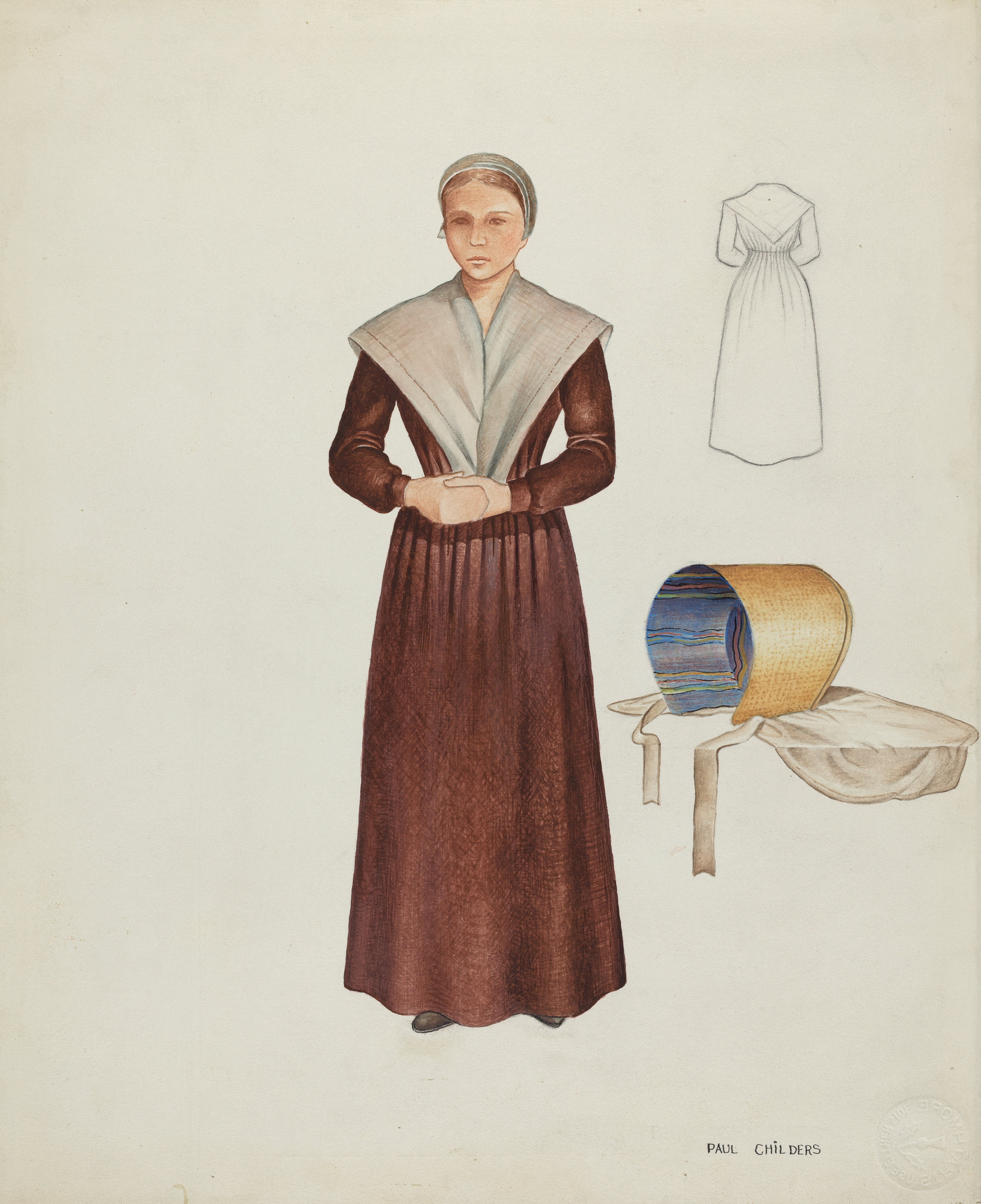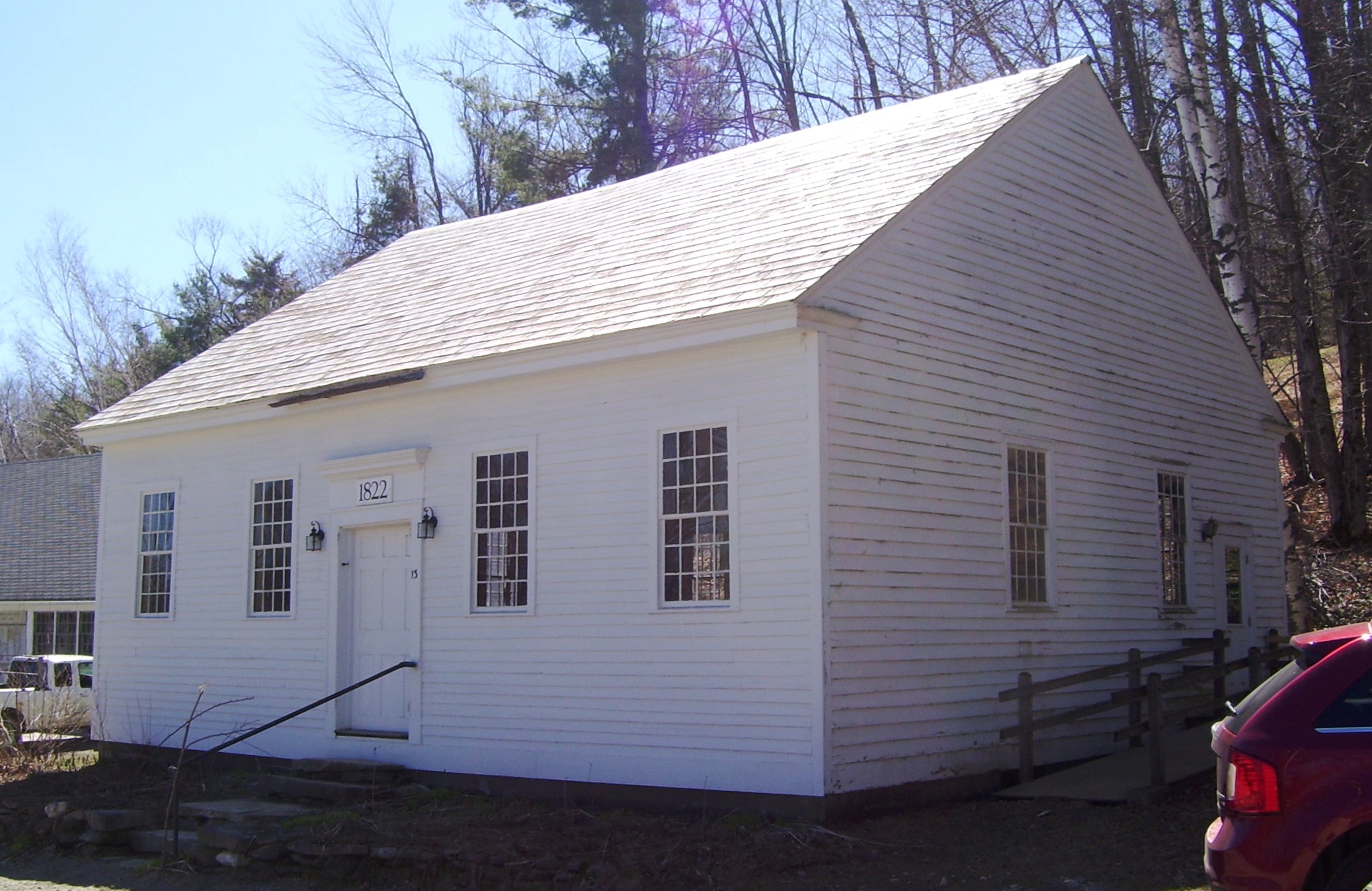|
Isaac N. Youngs
Isaac Newton Youngs (July 4, 1793 – August 7, 1865) was a member of the Shakers. He was a prolific scribe, correspondent, and diarist who documented the history of the New Lebanon, New York Church Family of Shakers from 1815 to 1865. Early life Isaac Newton Youngs was born in Johnstown, New York on July 4, 1793, the youngest child of Martha (Farley) and Seth Youngs Jr. He was christened in the Methodist church there. Seth Youngs decided to join the Shakers when Isaac was about six months old, and took Isaac and his other young children into the Shaker society at Watervliet, New York, where Isaac's aunt and uncle, Molly (Van Epps) and Benjamin Youngs, lived. Isaac's mother chose not to join, so the infant Isaac was fostered by Benjamin and Molly Youngs at first.Wergland, chapter 2. Youngs lived with them for several years in an arrangement that was not unusual at the time. Many children, Shaker or not, were separated from their parents at young ages. Being "put out" or sent ... [...More Info...] [...Related Items...] OR: [Wikipedia] [Google] [Baidu] |
Shakers
The United Society of Believers in Christ's Second Appearing, more commonly known as the Shakers, are a Millenarianism, millenarian Restorationism, restorationist Christianity, Christian sect founded in England and then organized in the United States in the 1780s. They were initially known as "Shaking Quakers" because of their ecstatic behavior during worship services. Espousing Egalitarianism, egalitarian ideals, women took on spiritual leadership roles alongside men, including founding leaders such as Jane Wardley, Ann Lee, and Lucy Wright. The Shakers emigrated from England and settled in Revolutionary Thirteen Colonies, colonial America, with an initial settlement at Watervliet Shaker Historic District, Watervliet, New York (present-day Colonie, New York, Colonie), in 1774. They practice a Celibacy, celibate and Intentional community, communal utopian lifestyle, pacifism, uniform Charismatic Christianity, charismatic worship, and their model of Gender equality, equality of ... [...More Info...] [...Related Items...] OR: [Wikipedia] [Google] [Baidu] |
Humility
Humility is the quality of being humble. Dictionary definitions accentuate humility as a low self-regard and sense of unworthiness. In a religious context humility can mean a recognition of self in relation to a deity (i.e. God), and subsequent submission to that deity as a member of that religion.Humility, The Catholic encyclopedia, Herbermann et al. (Editors), Vol 7, 1910, pp 543-544Humility, The Protestant theological and ecclesiastical encyclopedia, Herzog et al (Editors), Vol 2, 1860, pp 598-599 Outside of a religious context, humility is defined as being "unselved", a liberation from consciousness of self, a form of temperance that is neither having pride (or haughtiness) nor indulging in self-deprecation. Humility is an outward expression of an appropriate inner, or self regard, and is contrasted with humiliation which is an imposition, often external, of shame upon a person. Humility may be misappropriated as ability to suffer humiliation through self-denouncements which ... [...More Info...] [...Related Items...] OR: [Wikipedia] [Google] [Baidu] |
Flesh (theology)
In the Bible, the word "flesh" is often used simply as a description of the fleshy parts of an animal, including that of human beings, and typically in reference to dietary laws and sacrifice."Flesh, from the Encyclopedia of the Bible and its Reception" DeGruyter (Berlin, Boston) 2014. Retrieved on 22 July 2014. Less often it is used as a metaphor for familial or kinship relations, and (particularly in the Christian tradition) as a metaphor to describe ful tendencies. A r ... [...More Info...] [...Related Items...] OR: [Wikipedia] [Google] [Baidu] |
Scribe
A scribe is a person who serves as a professional copyist, especially one who made copies of manuscripts before the invention of automatic printing. The profession of the scribe, previously widespread across cultures, lost most of its prominence and status with the advent of the printing press. The work of scribes can involve copying manuscripts and other texts as well as secretarial and administrative duties such as the taking of dictation and keeping of business, judicial, and historical records for kings, nobles, temples, and cities. The profession has developed into public servants, journalists, accountants, bookkeepers, typists, and lawyers. In societies with low literacy rates, street-corner letter-writers (and readers) may still be found providing scribe service. Ancient Egypt One of the most important professionals in ancient Egypt was a person educated in the arts of writing (both hieroglyphics and hieratic scripts, as well as the demotic script from the sec ... [...More Info...] [...Related Items...] OR: [Wikipedia] [Google] [Baidu] |
Lathe
A lathe () is a machine tool that rotates a workpiece about an axis of rotation to perform various operations such as cutting, sanding, knurling, drilling, deformation, facing, and turning, with tools that are applied to the workpiece to create an object with symmetry about that axis. Lathes are used in woodturning, metalworking, metal spinning, thermal spraying, parts reclamation, and glass-working. Lathes can be used to shape pottery, the best-known design being the Potter's wheel. Most suitably equipped metalworking lathes can also be used to produce most solids of revolution, plane surfaces and screw threads or helices. Ornamental lathes can produce three-dimensional solids of incredible complexity. The workpiece is usually held in place by either one or two ''centers'', at least one of which can typically be moved horizontally to accommodate varying workpiece lengths. Other work-holding methods include clamping the work about the axis of rotation using a chuck or col ... [...More Info...] [...Related Items...] OR: [Wikipedia] [Google] [Baidu] |
Clothespin
A clothespin (US English), or clothes peg (UK English) is a fastener used to hang up clothes for drying, usually on a clothes line. Clothespins come in many different designs. Design During the 1700s laundry was hung on bushes, limbs or lines to dry but no clothespins can be found in any painting or prints of the era. The clothespin for hanging up wet laundry only appears in the early 19th century supposedly patented by Jérémie Victor Opdebec. This design does not use springs, but is fashioned in one piece of wood, with the two prongs part of the peg chassis with only a small distance between them—this form of peg creates the gripping action due to the two prongs being wedged apart and thus squeezing together in that the prongs want to return to their initial, resting state. This form of peg is often fashioned from plastic, or originally, wood. In England, clothes-peg making used to be a craft associated with the Romani people, commonly known by the term “gypsy”, wh ... [...More Info...] [...Related Items...] OR: [Wikipedia] [Google] [Baidu] |
Arch
An arch is a vertical curved structure that spans an elevated space and may or may not support the weight above it, or in case of a horizontal arch like an arch dam, the hydrostatic pressure against it. Arches may be synonymous with vaults, but a vault may be distinguished as a continuous arch forming a roof. Arches appeared as early as the 2nd millennium BC in Mesopotamian brick architecture, and their systematic use started with the ancient Romans, who were the first to apply the technique to a wide range of structures. Basic concepts An arch is a pure compression form. It can span a large area by resolving forces into compressive stresses, and thereby eliminating tensile stresses. This is sometimes denominated "arch action". As the forces in the arch are transferred to its base, the arch pushes outward at its base, denominated "thrust". As the rise, i. e. height, of the arch decreases the outward thrust increases. In order to preserve arch action and prevent collapse ... [...More Info...] [...Related Items...] OR: [Wikipedia] [Google] [Baidu] |
Waterworks
Water supply is the provision of water by public utilities, commercial organisations, community endeavors or by individuals, usually via a system of pumps and pipes. Public water supply systems are crucial to properly functioning societies. These systems are what supply drinking water to populations around the globe. Aspects of service quality include continuity of supply, water quality and water pressure. The institutional responsibility for water supply is arranged differently in different countries and regions (urban versus rural). It usually includes issues surrounding policy and regulation, service provision and standardization. The cost of supplying water consists, to a very large extent, of fixed costs (capital costs and personnel costs) and only to a small extent of variable costs that depend on the amount of water consumed (mainly energy and chemicals). Almost all service providers in the world charge tariffs to recover part of their costs. Water supply is a separate ... [...More Info...] [...Related Items...] OR: [Wikipedia] [Google] [Baidu] |
Hymnal
A hymnal or hymnary is a collection of hymns, usually in the form of a book, called a hymnbook (or hymn book). Hymnals are used in congregational singing. A hymnal may contain only hymn texts (normal for most hymnals for most centuries of Christian history); written melodies are extra, and more recently harmony parts have also been provided. Hymnals are omnipresent in churches but they are not often discussed; nevertheless, liturgical scholar Massey H. Shepherd once observed: "in all periods of the Church’s history, the theology of the people has been chiefly molded by their hymns." Elements and Format Since the twentieth century, singer-songwriter hymns have become common, but in previous centuries, generally poets wrote the words, and musicians wrote the tunes; the texts are known and indexed by their first lines ("incipits") and the hymn tunes are given names, sometimes geographical (the tune "New Britain" for the incipit "Amazing Grace, how sweet the sound"). The hy ... [...More Info...] [...Related Items...] OR: [Wikipedia] [Google] [Baidu] |
Hymn
A hymn is a type of song, and partially synonymous with devotional song, specifically written for the purpose of adoration or prayer, and typically addressed to a deity or deities, or to a prominent figure or personification. The word ''hymn'' derives from Greek (''hymnos''), which means "a song of praise". A writer of hymns is known as a hymnist. The singing or composition of hymns is called hymnody. Collections of hymns are known as hymnals or hymn books. Hymns may or may not include instrumental accompaniment. Although most familiar to speakers of English in the context of Christianity, hymns are also a fixture of other world religions, especially on the Indian subcontinent (''stotras''). Hymns also survive from antiquity, especially from Egyptian and Greek cultures. Some of the oldest surviving examples of notated music are hymns with Greek texts. Origins Ancient Eastern hymns include the Egyptian ''Great Hymn to the Aten'', composed by Pharaoh Akhenaten; the Hurrian ''Hy ... [...More Info...] [...Related Items...] OR: [Wikipedia] [Google] [Baidu] |
Poem
Poetry (derived from the Greek ''poiesis'', "making"), also called verse, is a form of literature that uses aesthetic and often rhythmic qualities of language − such as phonaesthetics, sound symbolism, and metre − to evoke meanings in addition to, or in place of, a prosaic ostensible meaning. A poem is a literary composition, written by a poet, using this principle. Poetry has a long and varied history, evolving differentially across the globe. It dates back at least to prehistoric times with hunting poetry in Africa and to panegyric and elegiac court poetry of the empires of the Nile, Niger, and Volta River valleys. Some of the earliest written poetry in Africa occurs among the Pyramid Texts written during the 25th century BCE. The earliest surviving Western Asian epic poetry, the ''Epic of Gilgamesh'', was written in Sumerian. Early poems in the Eurasian continent evolved from folk songs such as the Chinese ''Shijing'', as well as religious hymns (the Sanskrit ' ... [...More Info...] [...Related Items...] OR: [Wikipedia] [Google] [Baidu] |
Meeting House
A meeting house (meetinghouse, meeting-house) is a building where religious and sometimes public meetings take place. Terminology Nonconformist Protestant denominations distinguish between a * church, which is a body of people who believe in Christ, and; * meeting house or chapel, which is a building where the church meets. In early Methodism, meeting houses were typically called preaching houses (to distinguish it from a church house), which hosted itinerant preachers. Meeting houses in America The colonial meeting house in America was typically the first public building built as new villages sprang up. A meeting-house had a dual purpose as a place of worship and for public discourse, but sometimes only for "...the service of God." As the towns grew and the separation of church and state in the United States matured the buildings which were used as the seat of local government were called a town-house or town-hall. The nonconformist meeting houses generally do not have s ... [...More Info...] [...Related Items...] OR: [Wikipedia] [Google] [Baidu] |





.jpg)


.jpg)
